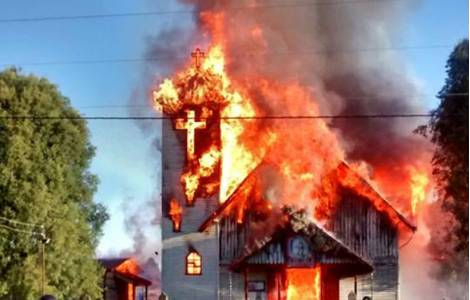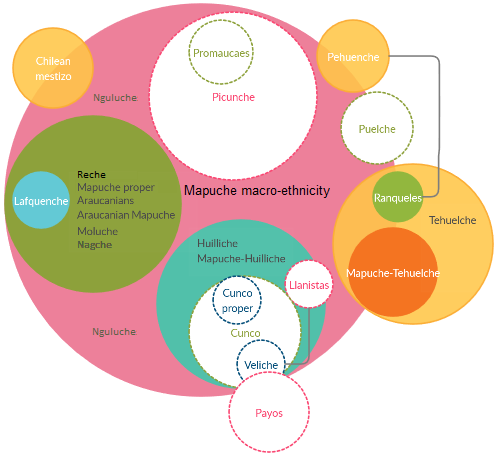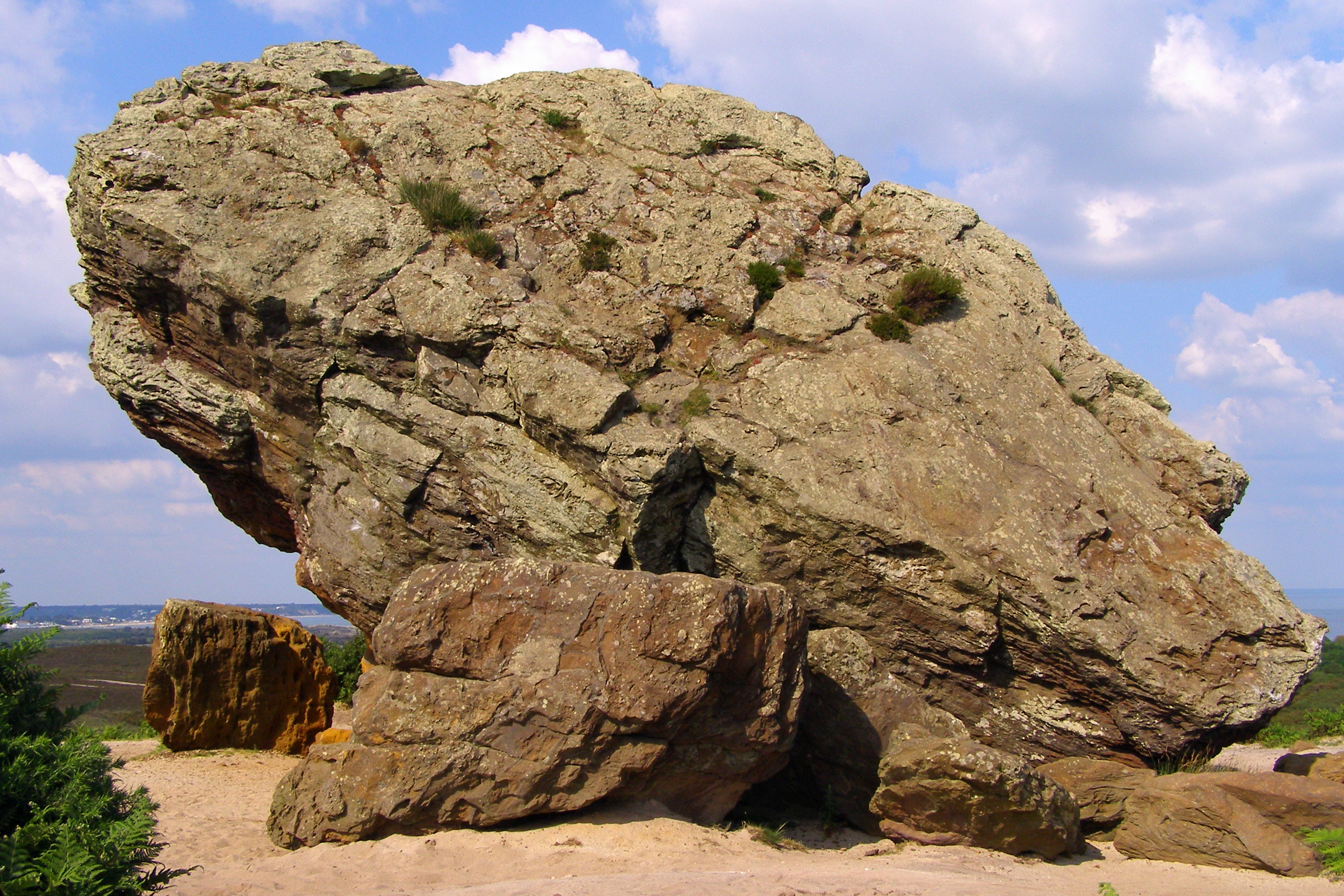|
Piedra Santa
Piedra Santa is a large rock outcrop near Malalcahuello in Araucanía Region, Chile. It is best known for folklore and folk Catholicism associated to it. Piedra Santa is said to be a Mapuche princess, and the daughter of great warrior, turned into rock. People who travel between Curacautín and Lonquimay stop at Piedra Santa to deposit food and other gifts in order to "feed" the princess. See also *List of individual rocks The following is a list of notable rocks and stones. See also * List of largest meteorites on Earth * List of longest natural arches * List of rock formations * List of rock formations that resemble human beings * List of rocks on Mars * Lists ... * Chile Route 181 References {{Chile-geo-stub Folk Catholicism Landforms of Araucanía Region Mapuche mythology Sacred rocks ... [...More Info...] [...Related Items...] OR: [Wikipedia] [Google] [Baidu] |
Rock Outcrop
An outcrop or rocky outcrop is a visible exposure of bedrock or ancient superficial deposits on the surface of the Earth and other terrestrial planets. Features Outcrops do not cover the majority of the Earth's land surface because in most places the bedrock or superficial deposits are covered by soil and vegetation and cannot be seen or examined closely. However, in places where the overlying cover is removed through erosion or tectonic uplift, the rock may be exposed, or ''crop out''. Such exposure will happen most frequently in areas where erosion is rapid and exceeds the weathering rate such as on steep hillsides, mountain ridges and tops, river banks, and tectonically active areas. In Finland, glacial erosion during the last glacial maximum (ca. 11000 BC), followed by scouring by sea waves, followed by isostatic uplift has produced many smooth coastal and littoral outcrops. Bedrock and superficial deposits may also be exposed at the Earth's surface due to human excav ... [...More Info...] [...Related Items...] OR: [Wikipedia] [Google] [Baidu] |
Araucanía Region
The Araucanía ( ), La Araucanía Region ( ) is one of Chile's 16 first-order administrative divisions, and comprises two provinces: Malleco in the north and Cautín in the south. Its capital and largest city is Temuco; other important cities include Angol and Villarrica. Chile did not incorporate the lands of the Araucanía Region until the 1880s, when it occupied the area to end resistance by the indigenous Mapuche by both military and political means. This opened up the area for Chilean and European immigration and settlement. In the 1900–1930 period, the population of Araucanía grew considerably, as did the economy despite recessions striking the rest of Chile. Araucanía became one of the principal agricultural districts of Chile, gaining the nickname of " granary of Chile". The administrative Araucanía Region was established in 1974, in what was the core of the larger historic region of Araucanía. In the 21st century, Araucanía is Chile's poorest region in t ... [...More Info...] [...Related Items...] OR: [Wikipedia] [Google] [Baidu] |
Folk Catholicism
Folk Catholicism can be broadly described as various ethnic group, ethnic expressions and practices of Catholic Church, Catholicism intermingled with aspects of folk religion. Practices have varied from place to place and may at times contradict the official doctrines and practices of the Catholic Church. Description Some forms of folk Catholic practices are based on syncretism with non-Christian or otherwise non-Catholic beliefs or religions. Some of these folk Catholic forms have come to be identified as separate religions, as is the case with Caribbean and Brazilian syncretism between Catholicism and West African religions, which include Haitian Vodou, Cuban Santería, and Brazilian Candomblé. Other syncretized forms, such as the syncretism between Catholic practice and indigenous American belief systems common in Maya peoples, Maya communities of Guatemala and Quechua people, Quechua communities of Peru, are typically not described by their practitioners or by outsiders as ... [...More Info...] [...Related Items...] OR: [Wikipedia] [Google] [Baidu] |
Mapuche
The Mapuche ( , ) also known as Araucanians are a group of Indigenous peoples of the Americas, Indigenous inhabitants of south-central Chile and southwestern Argentina, including parts of Patagonia. The collective term refers to a wide-ranging ethnicity composed of various groups who share a common social, religious, and economic structure, as well as a common linguistic heritage as Mapudungun speakers. Their homelands once extended from Choapa River, Choapa Valley to the Chiloé Archipelago and later spread eastward to Puelmapu, a land comprising part of the Pampas, Argentine pampa and Patagonia. Today the collective group makes up over 80% of the Indigenous peoples in Chile and about 9% of the total Chilean population. The Mapuche are concentrated in the Araucanía (historic region), Araucanía region. Many have migrated from rural areas to the cities of Santiago and Buenos Aires for economic opportunities, more than 92% of the Mapuches are from Chile. The Mapuche traditional e ... [...More Info...] [...Related Items...] OR: [Wikipedia] [Google] [Baidu] |
Curacautín
Curacautín, which means "Gathering Stone" in Mapudungun, is a Communes of Chile, commune and List of cities in Chile, city in the Chilean province of Malleco Province, Malleco. Curacautín is located 90 kilometres northeast of Temuco, in a valley near the volcanoes Tolhuaca (volcano), Tolhuaca, Lonquimay (volcano), Lonquimay and Llaima, all of which can be seen from the city. Historically, it served as a highway of sorts for the Pehuenches that lived on either side of the Andes mountain range. Volcanic origin This area is known for its natural environment, and the Conguillío National Park, Conguillío and Tolhuaca National Park, Tolhuaca National Parks, and Malleco National Reserve, Malleco and Malalcahuello-Nalcas National Reserves are close by. History The fort at Curacautín was founded on March 12, 1882, by Gregorio Urrutia. Between 1913 and 1915, two important structures (the railroad and the Greater City Hall) were built. In 1938, Mosso plywood factory began productio ... [...More Info...] [...Related Items...] OR: [Wikipedia] [Google] [Baidu] |
Lonquimay
Lonquimay is a town and commune in the Malleco Province of southern Chile's Araucanía Region. Transport It is the terminus of an abandoned broad gauge railway project which supporters cited as the most practical railway route through the Andes to Argentina, but which lacks a link between Lonquimay and Zapala in Argentina; revival of the project was announced in 2005 and progress begun within Chile. The line includes Chile's longest tunnel measuring . Demographics According to the 2002 census of the National Statistics Institute, Lonquimay spans an area of and has 10,237 inhabitants (5,414 men and 4,823 women). Of these, 3,435 (33.6%) lived in urban areas and 6,802 (66.4%) in rural areas. The population grew by 12.5% (1,138 persons) between the 1992 and 2002 censuses. Administration As a commune, Lonquimay is a third-level administrative division of Chile administered by a municipal council, headed by an alcalde who is directly elected every four years. The 2008-2012 al ... [...More Info...] [...Related Items...] OR: [Wikipedia] [Google] [Baidu] |
List Of Individual Rocks
The following is a list of notable rocks and stones. See also * List of largest meteorites on Earth * List of longest natural arches * List of rock formations * List of rock formations that resemble human beings * List of rocks on Mars * Lists of rocks in Western Australia * List of menhirs, List of standing stones * Monoliths * Moon rocks * Stolen and missing Moon rocks * Stones of Scotland * Glacial erratic **Glacial erratic boulders of Estonia, of Estonia **Glacial erratics on and around Rügen, of Rügen **of Washington (state), Washington State, United States ***Glacial erratic boulders of Island County, Washington, of Island County, Washington ***Glacial erratic boulders of King County, Washington, of King County, Washington ***Glacial erratic boulders of Kitsap County, Washington, of Kitsap County, Washington ***Glacial erratic boulders of Snohomish County, Washington, of Snohomish County, Washington ***Glacial erratic boulders of the Puget Sound region, of the Puget Sound ... [...More Info...] [...Related Items...] OR: [Wikipedia] [Google] [Baidu] |
Chile Route 181
Route 181-CH is a branch line road going eastward from Chile Highway 5 at Victoria to Pino Hachado Pass at the border to Argentina. Through its length the road passes along or close to the cities and towns of Victoria and Lonquimay. All of the route runs inside La Araucanía Region and between Curacautín and Lonquimay the road runs through Las Raíces Tunnel, Chile's longest tunnel. See also *Piedra Santa Piedra Santa is a large rock outcrop near Malalcahuello in Araucanía Region, Chile. It is best known for folklore and folk Catholicism associated to it. Piedra Santa is said to be a Mapuche princess, and the daughter of great warrior, turned int ... Roads in Chile Transport in Araucanía Region {{chile-road-stub ... [...More Info...] [...Related Items...] OR: [Wikipedia] [Google] [Baidu] |
Folk Catholicism
Folk Catholicism can be broadly described as various ethnic group, ethnic expressions and practices of Catholic Church, Catholicism intermingled with aspects of folk religion. Practices have varied from place to place and may at times contradict the official doctrines and practices of the Catholic Church. Description Some forms of folk Catholic practices are based on syncretism with non-Christian or otherwise non-Catholic beliefs or religions. Some of these folk Catholic forms have come to be identified as separate religions, as is the case with Caribbean and Brazilian syncretism between Catholicism and West African religions, which include Haitian Vodou, Cuban Santería, and Brazilian Candomblé. Other syncretized forms, such as the syncretism between Catholic practice and indigenous American belief systems common in Maya peoples, Maya communities of Guatemala and Quechua people, Quechua communities of Peru, are typically not described by their practitioners or by outsiders as ... [...More Info...] [...Related Items...] OR: [Wikipedia] [Google] [Baidu] |
Landforms Of Araucanía Region
A landform is a land feature on the solid surface of the Earth or other planetary body. They may be natural or may be anthropogenic (caused or influenced by human activity). Landforms together make up a given terrain, and their arrangement in the landscape is known as topography. Landforms include hills, mountains, canyons, and valleys, as well as shoreline features such as bays, peninsulas, and seas, including submerged features such as mid-ocean ridges, volcanoes, and the great oceanic basins. Physical characteristics Landforms are categorized by characteristic physical attributes such as elevation, slope, orientation, structure stratification, rock exposure, and soil type. Gross physical features or landforms include intuitive elements such as berms, cliffs, hills, mounds, peninsulas, ridges, rivers, valleys, volcanoes, and numerous other structural and size-scaled (e.g. ponds vs. lakes, hills vs. mountains) elements including various kinds of inland and oceanic waterbodi ... [...More Info...] [...Related Items...] OR: [Wikipedia] [Google] [Baidu] |
Mapuche Mythology
Mapuche religion is the traditional Native American religion of the Mapuche people. It is practiced primarily in south-central Chile and southwest Argentina. The tradition has no formal leadership or organizational structure and displays much internal variation. Mapuche theology incorporates a range of deities and spirits. One of the most prominent deities is Ngünechen, sometimes equated with the Christian God. Communal prayer ceremonies are termed ''ngillatun'' and involve the provision of offerings and animal sacrifice. Various different ritual specialists were historically active among the Mapuche, but in the 20th century many of these died out, leaving the ''machi'' as the main kind. These ''machi'' are tasked with overseeing healing and divination, tasks accomplished through their communication with spirits. Historically, the Mapuche were politically independent and prevented conquest by the Incan and Spanish Empires. In 1883 the Chilean military defeated the Mapuche and ... [...More Info...] [...Related Items...] OR: [Wikipedia] [Google] [Baidu] |



